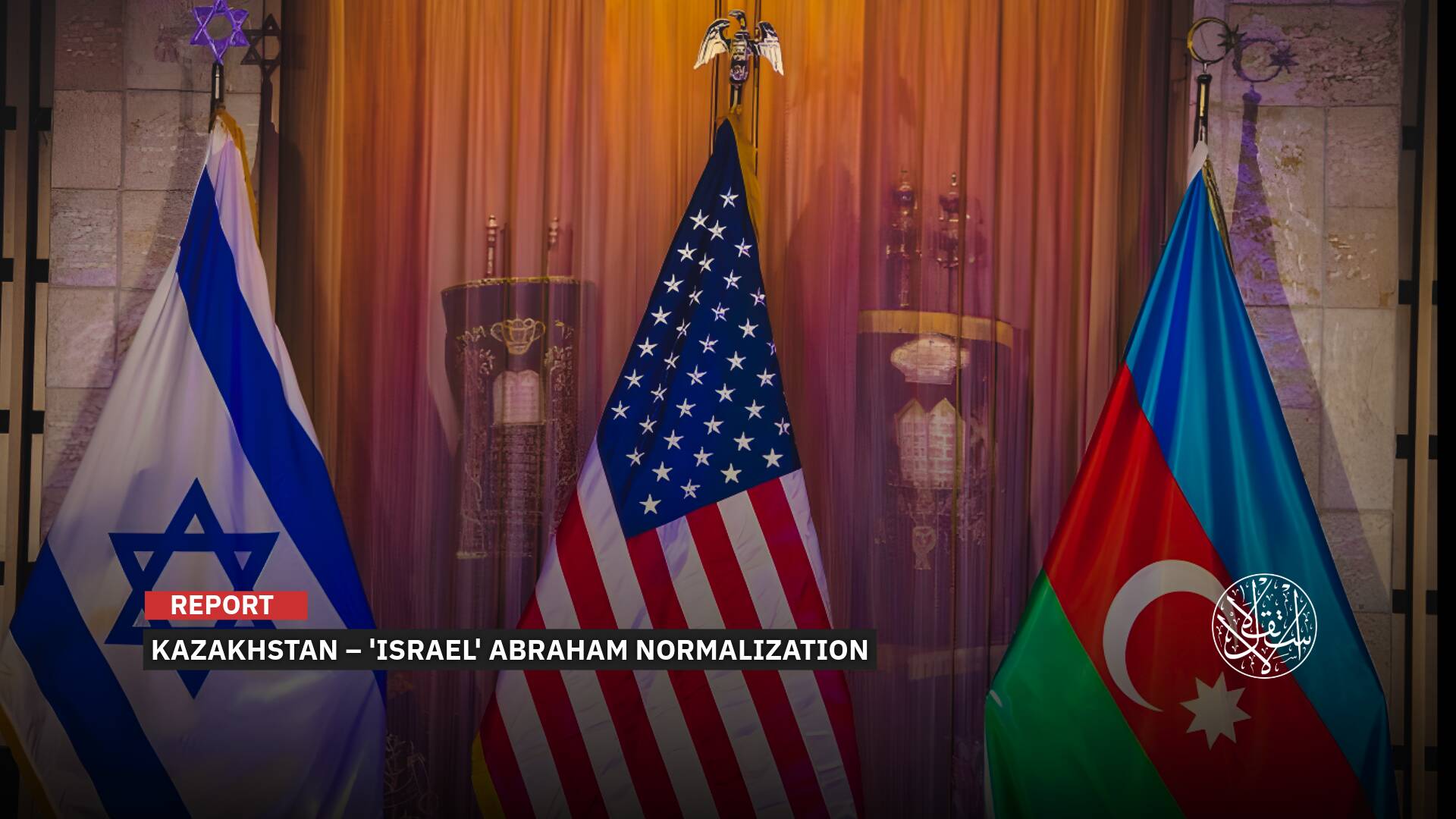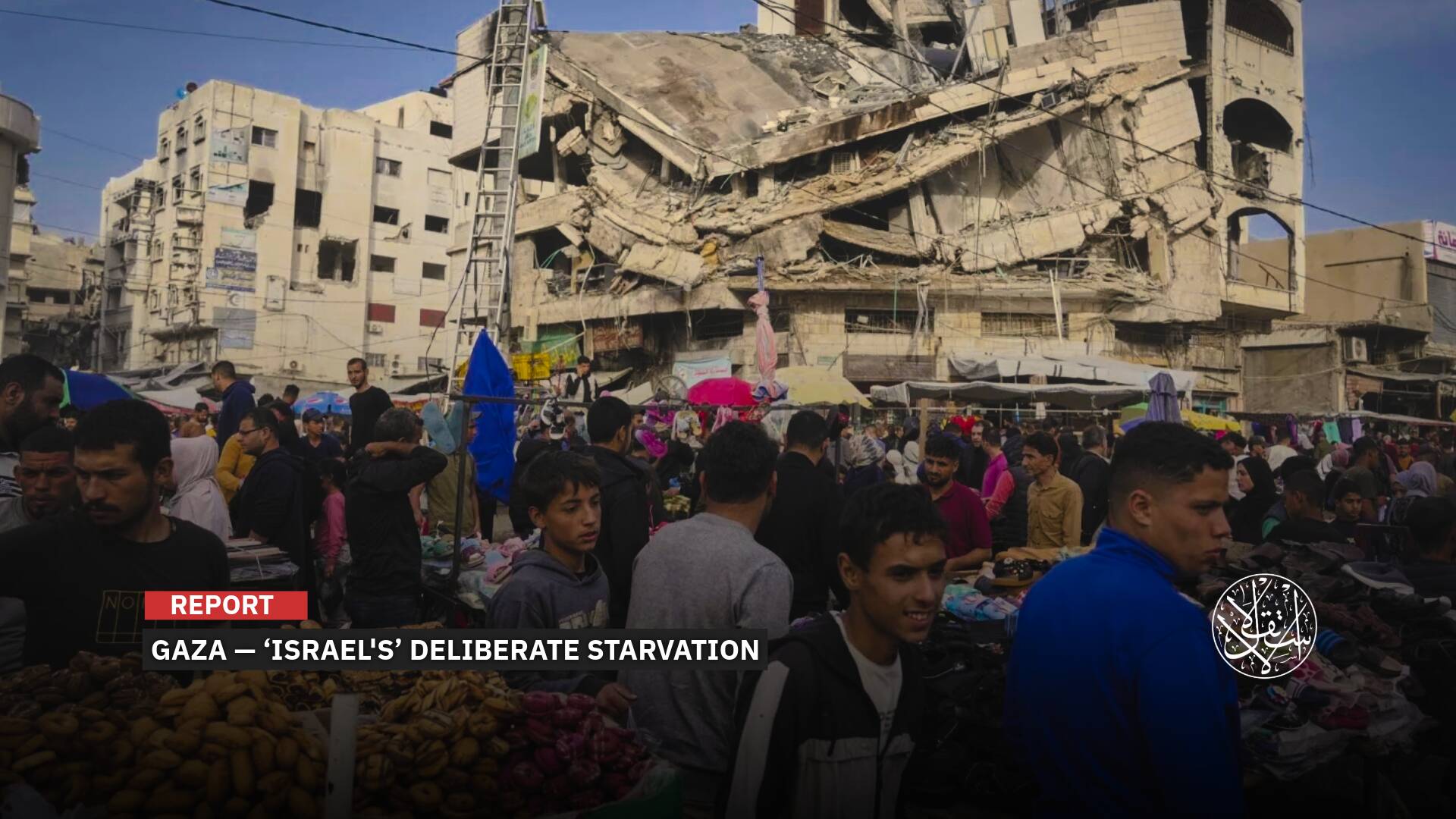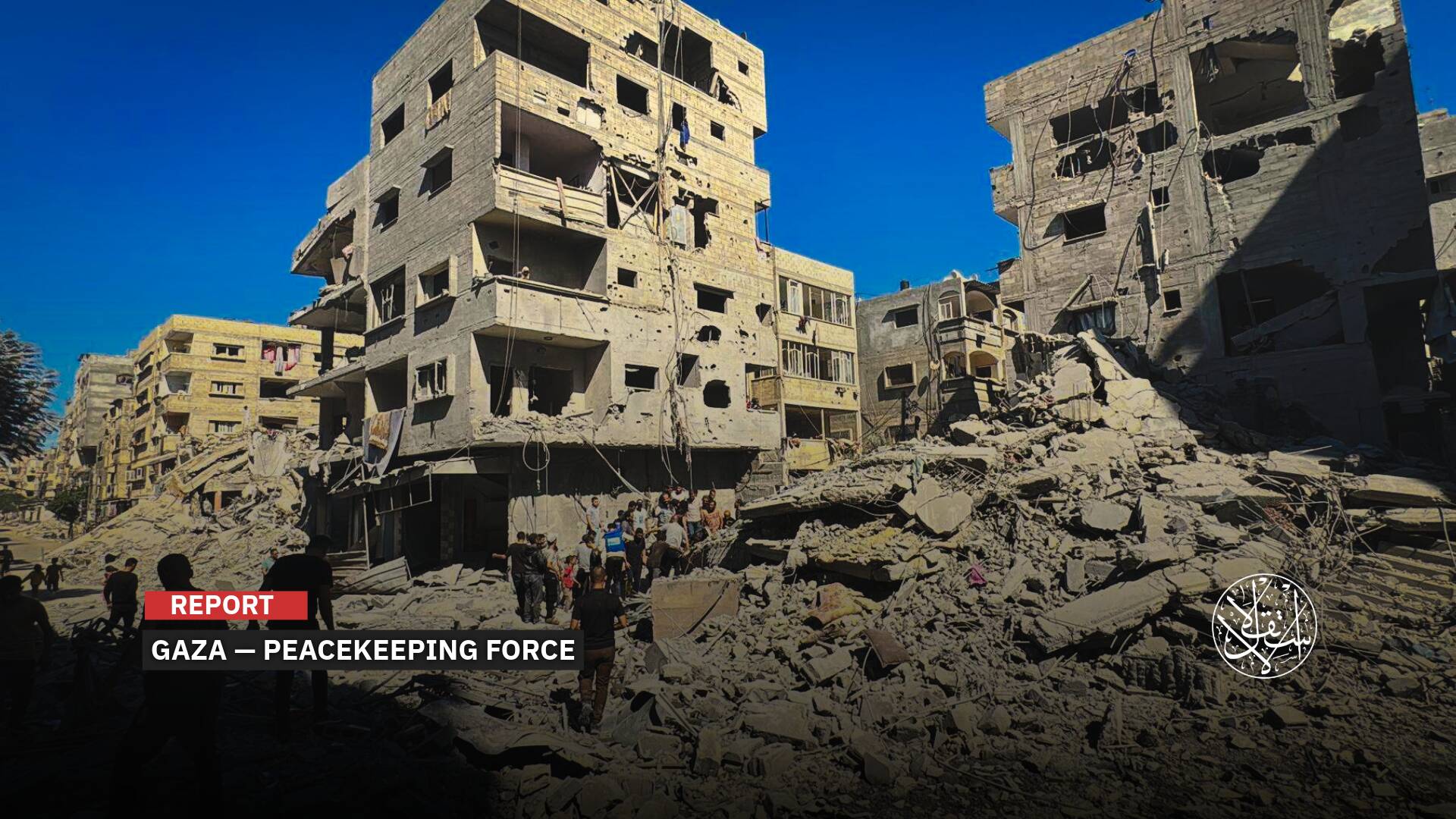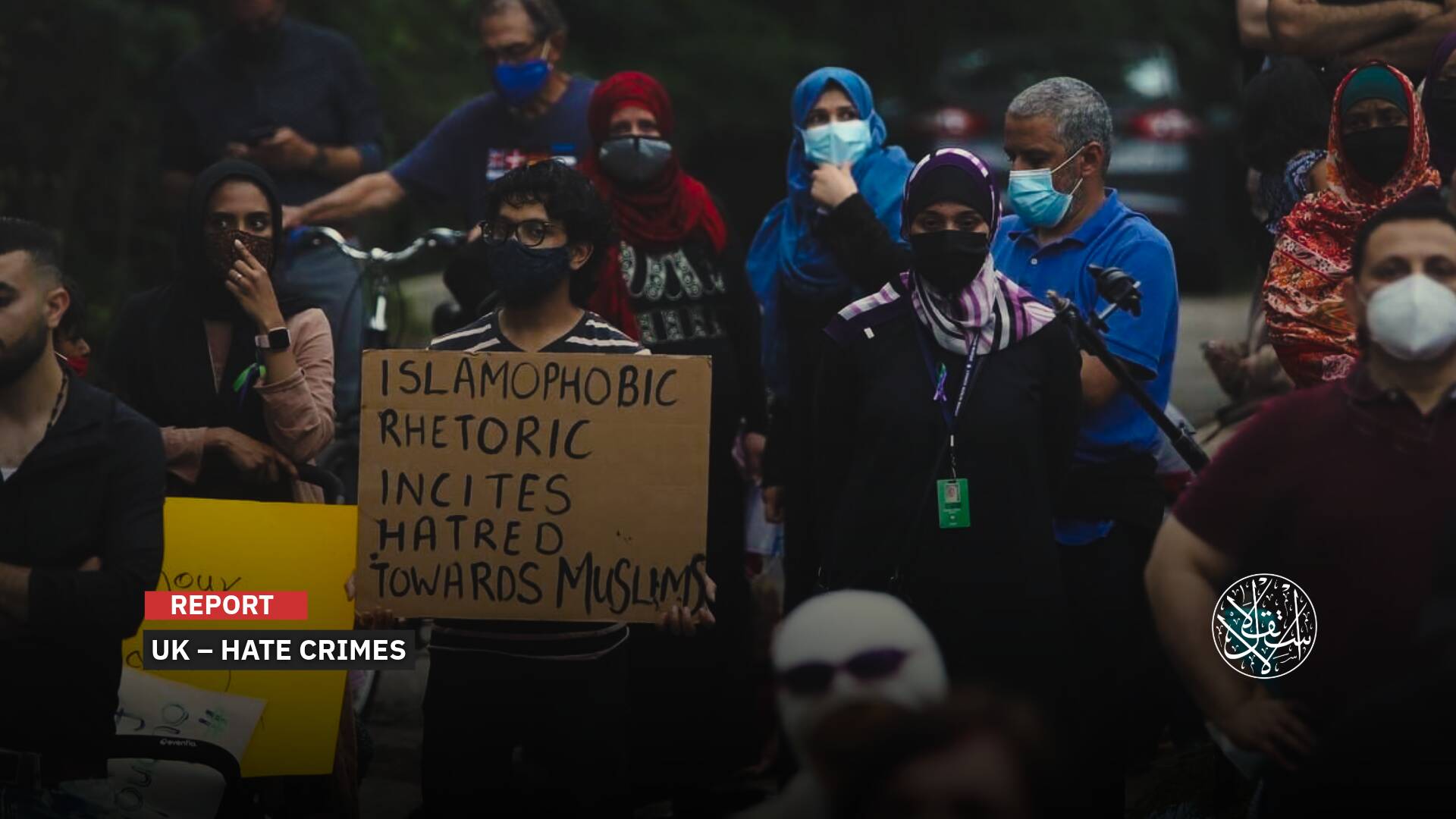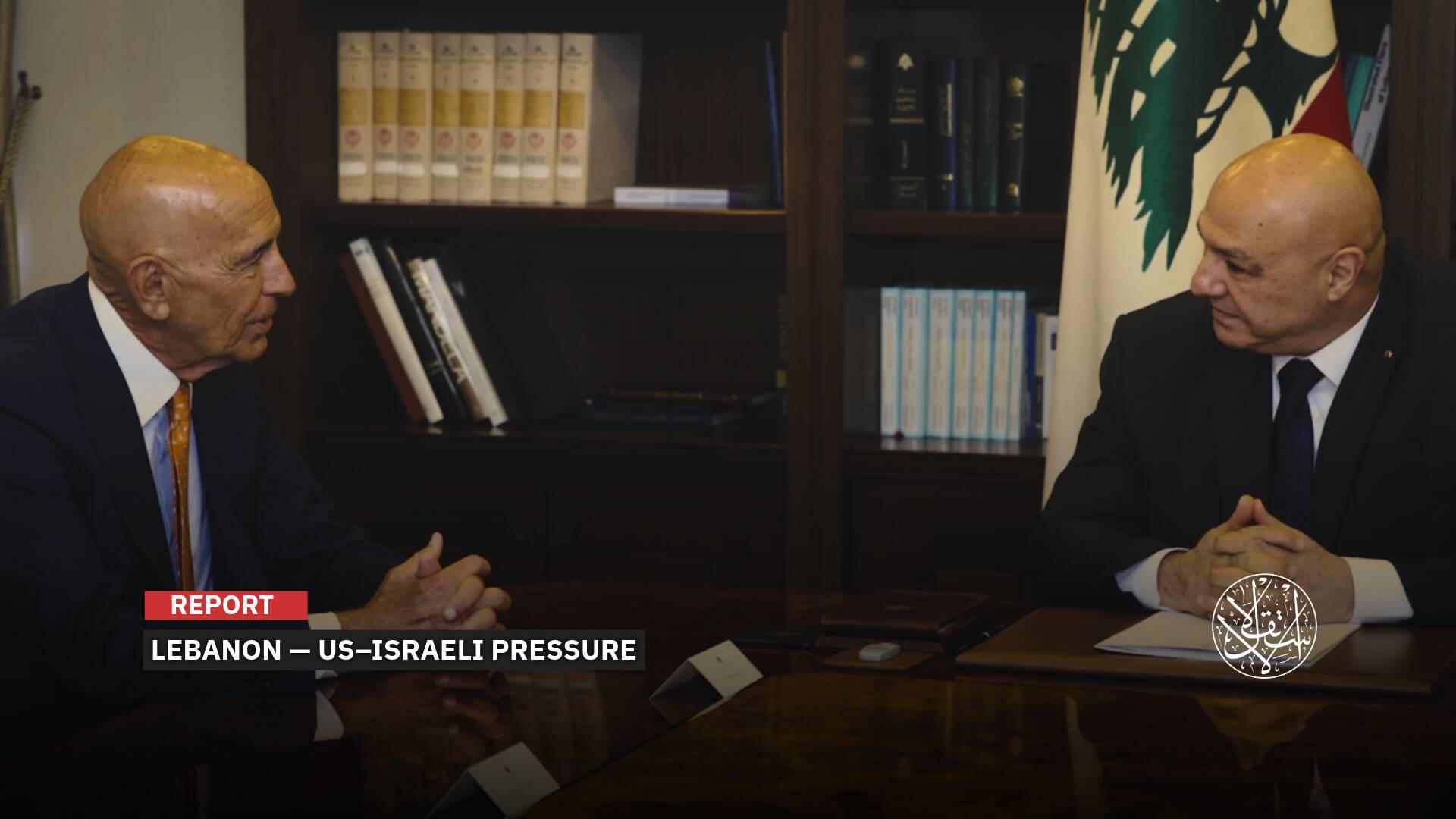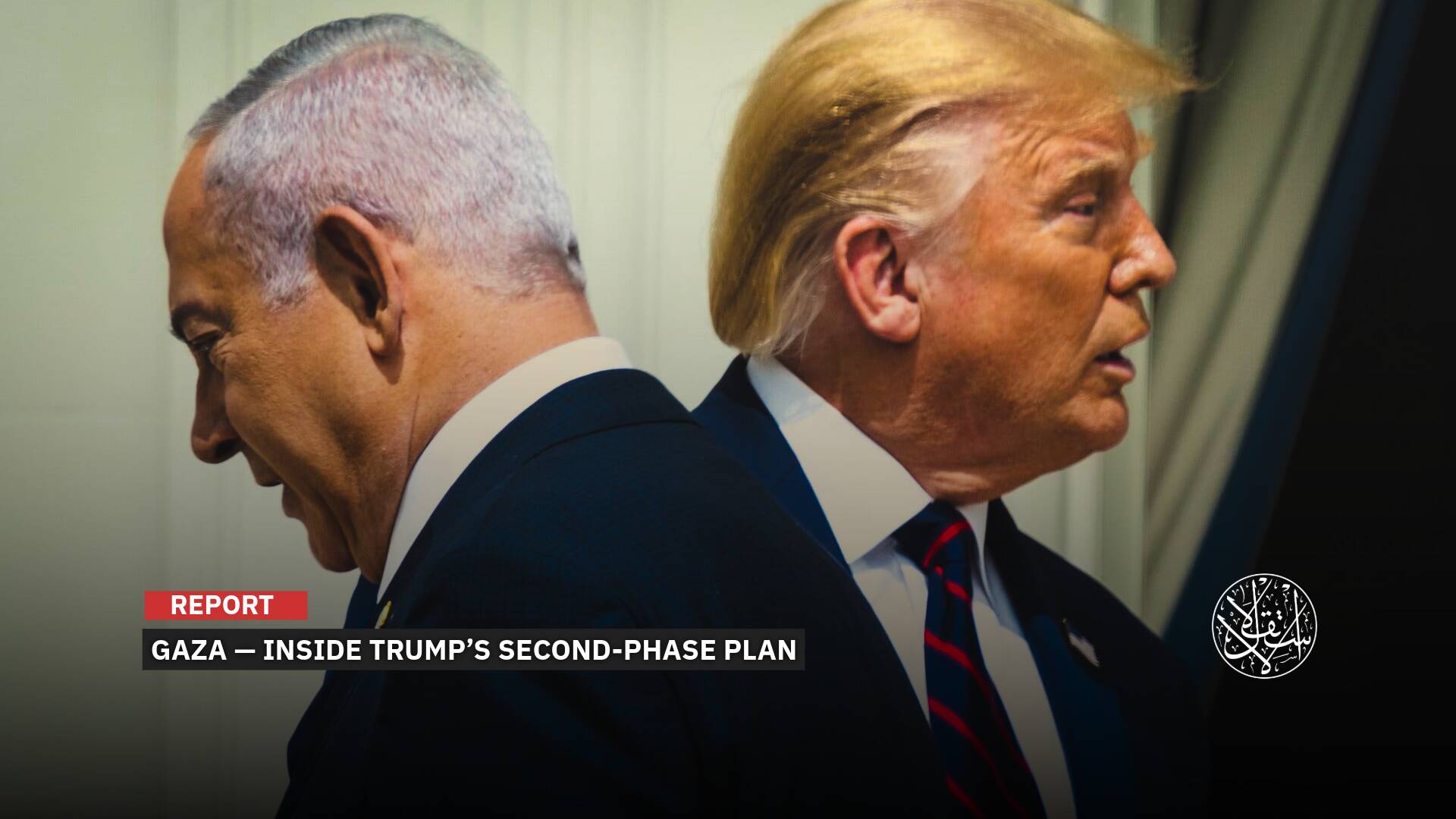Pressed by Trump and Netanyahu: Will Hamas Lay Down Its Arms?
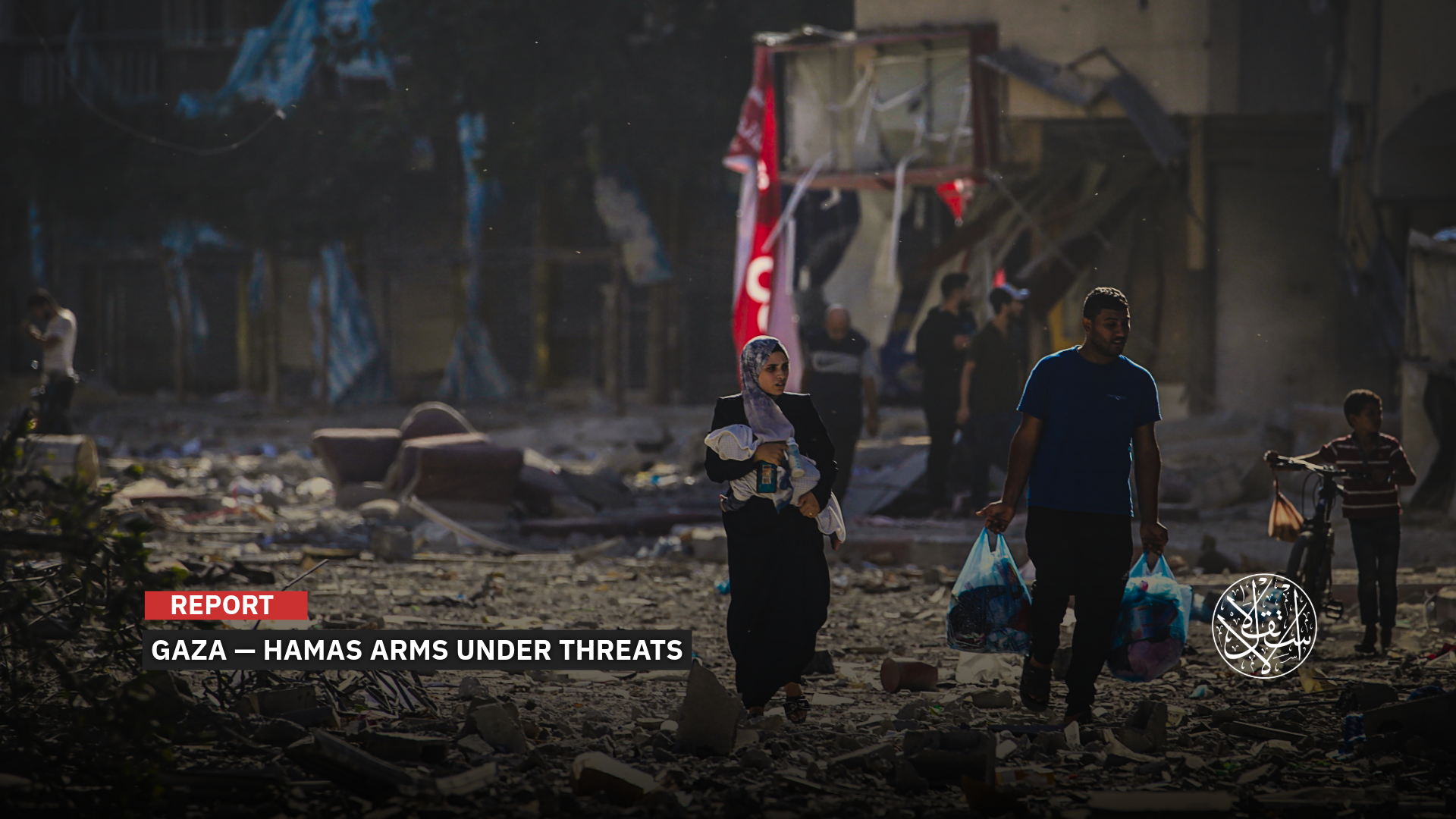
U.S. pressure may push the Israeli Occupation to accept gradual steps of the agreement.
U.S. and Israeli Occupation pressure over disarming the Palestinian Resistance Movement in Gaza continues to mount during the second phase of the ceasefire agreement signed on October 10, 2025. President Donald Trump has repeatedly insisted that disarmament is a non-negotiable condition for keeping the truce alive, while Israeli officials warn they’re ready to resume the aggression if that demand isn’t met.
On October 15, 2025, Trump warned Hamas that he might give Israeli Prime Minister Benjamin Netanyahu the green light to restart the war on Gaza if the group refuses to voluntarily give up its weapons.
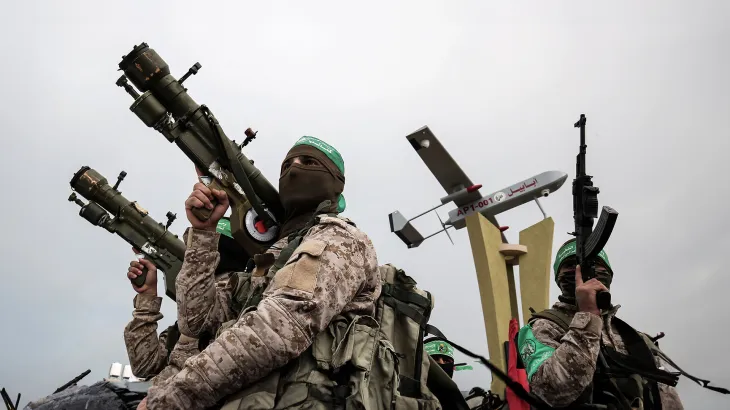
Trump Threatens a Return to War
Trump warned that “Israel will return to those streets [Gaza] as soon as I say the word, [and] what’s going on with Hamas, that’ll be straightened out quickly.”
His threat to restart the war echoed the broader U.S. role in the genocide, during which Washington continued supplying weapons to the Israeli Occupation for two years. According to figures issued by Gaza’s Government Media Office on October 11, 2025, more than 68,000 Palestinians had been killed and around 170,000 injured, most of them women and children, along with the destruction of roughly 90 percent of Gaza’s civilian infrastructure.
On November 6, 2025, Trump reiterated that “Israel” would remain in Gaza until disarmament was enforced and any future militarization of the territory was prevented. He also emphasized that his team, working with Israeli Strategic Affairs Minister Ron Dermer, had drafted a 20-point plan aimed at effectively isolating Hamas, including the deployment of an international force tasked with overseeing disarmament and removing the movement from any future governing role in Gaza.
The proposed international force is one of the central elements of Trump’s plan, which formed the basis of the ceasefire agreement. Under the proposal, the force would control security in the Strip under the oversight of regional countries and the United States.
However, despite Trump’s assurances, a report in the New York Times on October 21, 2025, citing diplomats and officials, revealed that many countries rejected joining such a peacekeeping mission for fear of direct confrontation with Hamas. These countries, the report said, were unwilling to place their troops in Gaza’s urban centers due to the risks posed by tunnels and armed fighters.
Egypt’s State Information Service chief Diaa Rashwan said on November 6 that tasking an international force with disarming Hamas would inevitably lead to armed clashes. No participating country, he argued, would accept bearing that responsibility. He added that Trump’s plan raised the possibility of either disarming or freezing the group’s weapons—an issue still under negotiation—and that any handover of weapons would leave the movement in a highly precarious position.
Reacting sarcastically to the countries backing out, Israeli Agriculture Minister Avi Dichter told the security cabinet on November 6, “The possibility that Hamas will put aside its weapons is the same possibility that Israel will win the [World Cup].”
A Possible Middle Ground
As more countries decline participation in the proposed international force, mediators have begun exploring alternatives to address Hamas’s weapons—a sticking point that observers say is deterring states from joining any mission.
An Arab source involved in the mediation told Israel’s i24NEWS on November 3 that Hamas floated a proposal to hand over its heavy weapons to Egypt while pledging to halt smuggling and refrain from new military activity. According to the source, Egypt, the Palestinian Authority, and Hamas would select a 15-member committee to administer Gaza from a list of 40 names submitted to Cairo. The agreement, however, remains unresolved, with Egypt ultimately having the final say.
Bishara Bahbah, an American-Palestinian mediator and head of Arab Americans for Peace, said on November 3 that Hamas had shown openness to relinquishing its heavy weapons. He added that U.S. officials told him Washington was willing to accept such a formula.
But Palestinian affairs researcher Mohammed Eid argued that giving up weapons or disbanding armed wings would amount to the effective end of Hamas. The movement, he noted, was founded on armed resistance, making it unrealistic to expect full disarmament. Such a decision, he added, lies not only with political leaders or negotiators but also with fighters and field commanders in Hamas’s Qassam Brigades and other resistance groups.
“Fully disarming the Resistance is virtually impossible, and the odds of achieving such an outcome remain extremely low,” he told Al-Estiklal.
“A more plausible alternative,” he suggested, “would be for Hamas to agree to suspend offensive capabilities for a defined period under specific terms while retaining defensive arms.”
Eid argued that this compromise may be the closest option to the movement’s current position and could serve as a bridge into the next phase of the political process.
Looking ahead, the researcher predicted that the Israeli Occupation will continue demanding total disarmament and the destruction of all tunnels. Still, he doubted a return to full-scale war at this stage. Instead, he expects “Israel” to use reconstruction, aid, border access, and living-condition improvements as leverage rather than direct military escalation.
He added that U.S. pressure may push the Israeli Occupation to accept phased steps in the agreement, such as partial disarmament of Hamas, in exchange for long-term guarantees, including restrictions near border areas and other security measures. These guarantees, Eid said, could also involve regional mediators and potentially pave the way toward a full ceasefire agreement with defined monitoring and gradual implementation mechanisms.
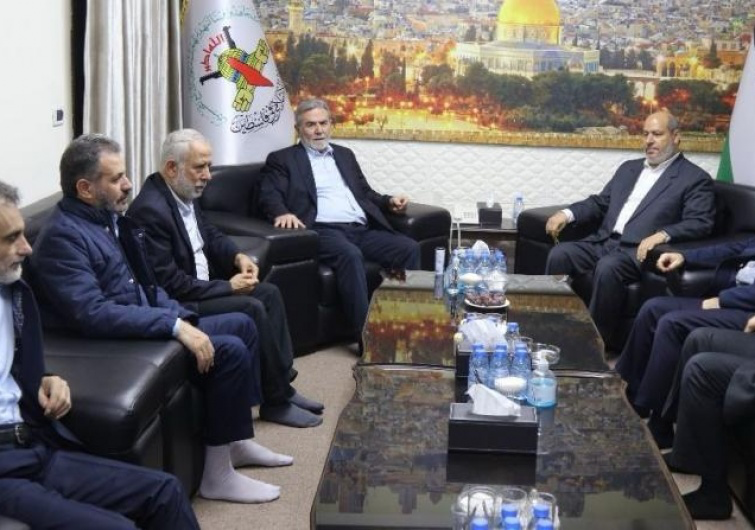
The Factions’ Position
Palestinian factions firmly reject any proposal to surrender their weapons. On October 9, Hamas official Osama Hamdan said no Palestinian would ever accept such a demand, stressing that “our people need their weapons and their resistance now more than ever.”
That same day, Ziyad al-Nakhalah, the secretary-general of Islamic Jihad, said his movement would not even entertain discussions about disarmament.
A resistance fighter told Al-Estiklal that handing over weapons is simply not an option, arguing that such a move would fulfill Israeli Occupation demands it could not achieve on the battlefield and would not obtain afterward either. He emphasized that this is the stance of every fighter and of the Palestinian public as a whole, regardless of political affiliation.
“Disarmament contradicts the religious and ideological foundations on which Islamic resistance was built; it’s a humiliation that would end the project of liberation and erase decades of struggle and sacrifice.”
“I personally lost my entire family, my home, many relatives, and most of my social circle, neighbors, friends, and everyone. The area where I grew up is still under Israeli Occupation control. Most fighters have lost everything except their rifles, and there is no way they will give them up,” the fighter added.
While expressing confidence in the Palestinian negotiating team involved in the ceasefire talks, he warned that if the delegation were to accept any arrangement leading to disarmament, it would be impossible to enforce such a decision inside Gaza.
He insisted that every fighter will hold on to his weapon no matter what deals are reached, saying that no one has the actual capacity to disarm the resistance as long as the Israeli Occupation remains on historic Palestinian land.
He noted that the resistance has survived far more difficult periods, recalling the Palestinian Authority’s 1996 crackdown, when anyone suspected of belonging to Hamas was jailed and prisons were filled—yet the movement endured.
“The military wing of Hamas cannot be eliminated. Even if, hypothetically, it were wiped out—which cannot happen—another armed resistance would rise from among the same fighters or others to continue the path.” For the fighters, he said, organizations and names are tools, not the goal; what remains sacred is the struggle itself.
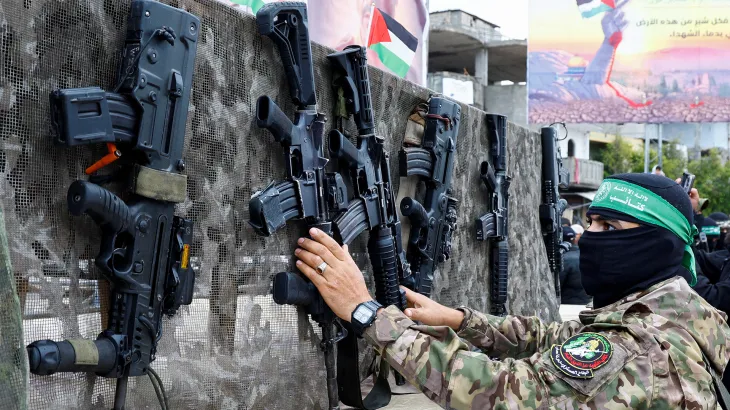
Public Opposition
Rejection of disarming the Palestinian Resistance is not limited to the factions; it is strongly rooted in public sentiment as well.
A recent Palestinian public opinion poll, released by the Palestinian Center for Policy and Survey Research on October 28, 2025, showed a clear and consistent refusal to support disarming Hamas or accepting any political arrangement that undermines the core of the Resistance.
According to the poll, about 70 percent of Palestinians oppose disarming Hamas even if it were presented as a condition to end the war on Gaza. Support for rejecting disarmament reached 78 percent in the West Bank and 55 percent in Gaza, signaling a shared red line despite political and geographic differences between the two regions.
Al-Estiklal interviewed several Gaza residents about the Israeli Occupation’s push for disarmament, and they all firmly rejected the idea.
Abu Khaled Hamdi said Palestinians categorically oppose giving up the weapons of the Resistance and will not accept such a move under any circumstances. He argued that these weapons protect Gaza from permanent occupation, have prevented the Israeli Occupation from spreading deeper into the Strip, and have provided civilians with a sense of safety.
He added that armed resistance has stopped Israeli forces from freely raiding homes, arresting residents at any hour, and mistreating women.
Hussam Bakra said surrendering weapons would be an act of betrayal that could open the door to repeating tragedies like the Sabra and Shatila massacres. He described the weapons as a collective Palestinian asset—built with people’s money, efforts, and even jewelry donated by women—and therefore not something anyone has the right to give up.
Abu Hassan al-Taaban recalled the trauma of the 1967 war and the stories of the 1948 Nakba passed down by his parents and grandparents. What has changed today, he said, is that Palestinians now have the means to defend themselves. No army, Arab or otherwise, he added, can protect Palestinians the way they protect themselves, something he believes the current war has made abundantly clear.
He stressed that without Resistance, displaced families would not have been able to return to their neighborhoods, nor would many communities have remained in their homes. For him, armed resistance is the primary means through which Palestinians defend their lives and their presence.
He acknowledged the immense pain, loss, and displacement inflicted by the recent war but insisted that abandoning the principle of standing firm is not an option. The destruction, he said, comes from the Israeli Occupation, and what prevents it from recurring is the endurance of the Resistance and the continued presence of its weapons.
Sources
- Report: Countries Refuse to Send Troops to Gaza for Fear of Clashing With Hamas [Arabic]
- Trump tells CNN Israeli forces could resume fighting in Gaza ‘as soon as I say the word’ if Hamas won’t uphold ceasefire deal
- Nations Hesitate to Send Troops to Gaza, Fearing Clashes With Hamas
- Israeli minister: ‘Gaza war is not ended’ as Hamas won’t disarm
- Majority of Palestinians Reject Disarming the Resistance and Back Hamas Despite Divisions Over “Trump Plan” [Arabic]


